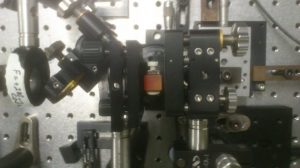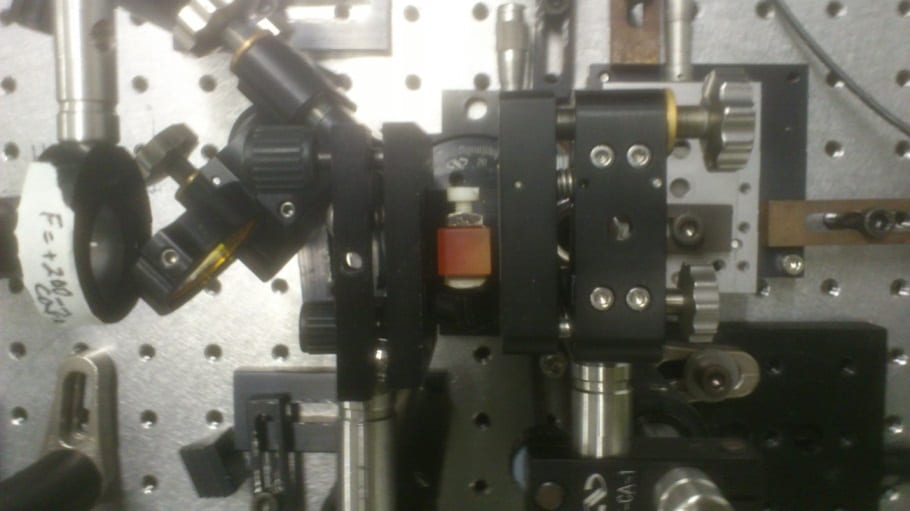Use of a defect chalcopyrite might become practical at pump levels sufficiently lower than the optical damage threshold: High-power HgGa2S4 optical parametric oscillator pumped at 1064 nm and operating at 100 Hz is characterized by much lower pump threshold and higher conversion efficiency than the conventional chalcopyrite AgGaS2.
 The so-called defect chalcopyrite nonlinear optical crystals with chemical formula AIIBIII2CVI4 and point group 4 symmetry possess substantially higher second order nonlinear susceptibility in comparison to their chalcopyrite analogues, especially having in mind the close band-gap values. However, in actual fact only one such ternary crystal, mercury thiogallate HgGa2S4 (HGS), and the quaternary CdxHg1−xGa2S4 (a solid solution of mercury and cadmium thiogallates) have been used so far for phase-matched nonlinear frequency conversion.
The so-called defect chalcopyrite nonlinear optical crystals with chemical formula AIIBIII2CVI4 and point group 4 symmetry possess substantially higher second order nonlinear susceptibility in comparison to their chalcopyrite analogues, especially having in mind the close band-gap values. However, in actual fact only one such ternary crystal, mercury thiogallate HgGa2S4 (HGS), and the quaternary CdxHg1−xGa2S4 (a solid solution of mercury and cadmium thiogallates) have been used so far for phase-matched nonlinear frequency conversion.
Due to its wide band-gap, HGS, similar to the commercially available chalcopyrite AgGaS2, can be pumped near 1 μm by short or ultrashort pulse laser sources (e.g. Nd:YAG at 1064 nm) without two-photon absorption. Only few other non-oxide crystals possess this property but most of them exhibit nonlinear susceptibility lower than AGS.
Now, a German-Russian team led by Valentin Petrov employed HGS in a 1064-nm pumped optical parametric oscillator (OPO) operating at 100 Hz, to generate ∼5 ns long idler pulses near 4 μm with energies as high as 6.1 mJ and average power of 610 mW. The researchers from the Max-Born-Institute for Nonlinear Optics and Ultrafast Spectroscopy, Berlin (Germany) and the Kuban State University, Krasnodar (Russia) were able to show that at crystal dimensions comparable to those available for AGS, operation of the 1064-nm pumped HGS OPO is characterized by much lower pump threshold and higher conversion efficiency. The most important consequence: such a device might become practical at pump levels sufficiently lower than the optical damage threshold.
From their experiments, the scientists conclude that HGS has a great potential compared to all known non-oxide nonlinear crystals that can be pumped near 1 μm (powerful Nd- or Yb-based pulsed laser systems) for coverage of the mid-IR wavelength range up to ∼12 μm. One essential possible improvement is obvious: HGS, similar to AGS, exhibits for such three-wave processes substantially higher (roughly by 50%) effective nonlinearity if type-II (eo-e) interaction is applied with a crystal cut at ϕ =0°. Ideally this should be combined with increased crystal aperture because the OPO threshold will be reduced. The researchers expect to reach output energies on the 10 mJ level (e.g. > 1 W) and more that 5 mJ at idler wavelengths > 5 μm using commercially available pump sources at 1064 nm. One of the most important aspects is long term damage-free operation with such OPOs, especially at increased repetition rates. Consequently, further reduction of the HGS OPO threshold by using longer crystal samples and type-II interaction will dramatically improve the chances to reach the high reliability and stability required for commercialization.

















